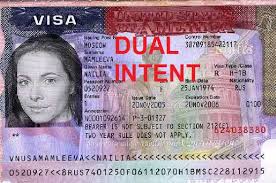The new fiancé visa process replaced the old in October of 2013 when the DS-230, DS-156 and DS-156K were replaced by the DS-160. The DS- 230, DS-156 and DS-156K were all filed by mail. But the DS-160 is now required to be filed online once the petition to classify the alien fiancé is approved. The Form I-129F, on which the classification is filed and most of the other visa requirements of the old fiancé visa process, remains the same.
Fiance visa allows for dual intent
The fiancé visa, also known as the K visa, permits a foreign citizen fiancé to travel to the United States to marry her US citizen spouse within 90 days of his entry into the country. The visa petitioner must be a United States citizen. A Green Card or non-immigrant visa holder cannot petition for his foreign citizen fiance under this visa program.
After marrying, the foreign fiancé can then choose to file for a Green Card if she and her husband want to permanently reside in the United States. There are cases in which the foreign fiancé and her US citizen spouse marry in the United States, but choose to permanently reside in a foreign country, and may not need to file for a Green Card to reside in the country.
A Wedding is a Beautiful Thing
To start the visa process, the United States citizen files the Form I-129F with the Citizenship and Immigration Services (CIS) to classify his alien relative fiancé. The CIS will review the petition for evidence of contact and courtship between the parties, and if they exist, will approve the petition. It will inform the Petitioner about the approval, and then forward the application to the National Visa Center (NVC) for visa processing.
A Child of the Beneficiary can get the Visa as well
The NVC will advise the Petitioner that it will do the visa processing, and also about the next steps the Petitioner needs to take to complete the process. In general, the beneficiary needs to pay the visa filing fee, prepare the supporting documentation for the visa interview and schedule the visa interview. The supporting documents beneficiary needs to prepare and take to the visa interview are identity, nationality, status as a person, fitness for marriage, and health and criminal background fitness documents. The Petitioner, on the other hand, needs to prepare documents that show that he can take care of his fiancé, and documents to prove his fitness and prepardness for the pending marriage and continuing courtship with the alien fiancé.
 The next important phase of the process is the visa interview. It is scheduled, in general, by the beneficiary or by the Petitioner for the beneficiary at the United States consulate of the beneficiary’s residence. If the foreign fiancé is successful in the interview, the United States consul will grant her the visa.
The next important phase of the process is the visa interview. It is scheduled, in general, by the beneficiary or by the Petitioner for the beneficiary at the United States consulate of the beneficiary’s residence. If the foreign fiancé is successful in the interview, the United States consul will grant her the visa.
Children of fiancés can accompany their parents as derivative beneficiaries. They do not have to file a separate Form I-129F at the beginning of the process. The Petitioner can just list them on his Form I-129F. But upon the approval of the petition, they are required to file separate visa petitions with the NVC and the United States consulate.
Fiance Visas bridge Relationship Gaps
There are cases where the beneficiary moves to another country before or after the filed fiancé visa petition is approved. In such a case, the Petitioner can request for transfer of the petition to the consular venue of beneficiary’s new residence for continued processing of the visa.
In general, the fiancé visa process takes about six to nine months from the petition filing date. This time can, however, be longer if there are filing mistakes that need to be corrected or the various processing agencies make additional requests to which the parties do not quickly attend.
The writer of this blog is an attorney at Swaray Law Office in Brooklyn Center, Minnesota. Brooklyn Center is in the neighborhood of the cities of Brooklyn Park, Minneapolis, Crystal, New Brighton and Blaine in the Twin Cities area of Minnesota. Should the reader need additional information on fiancé visas, contact Swaray Law Office at swarayassociates@cs.com or 763-549-0670































